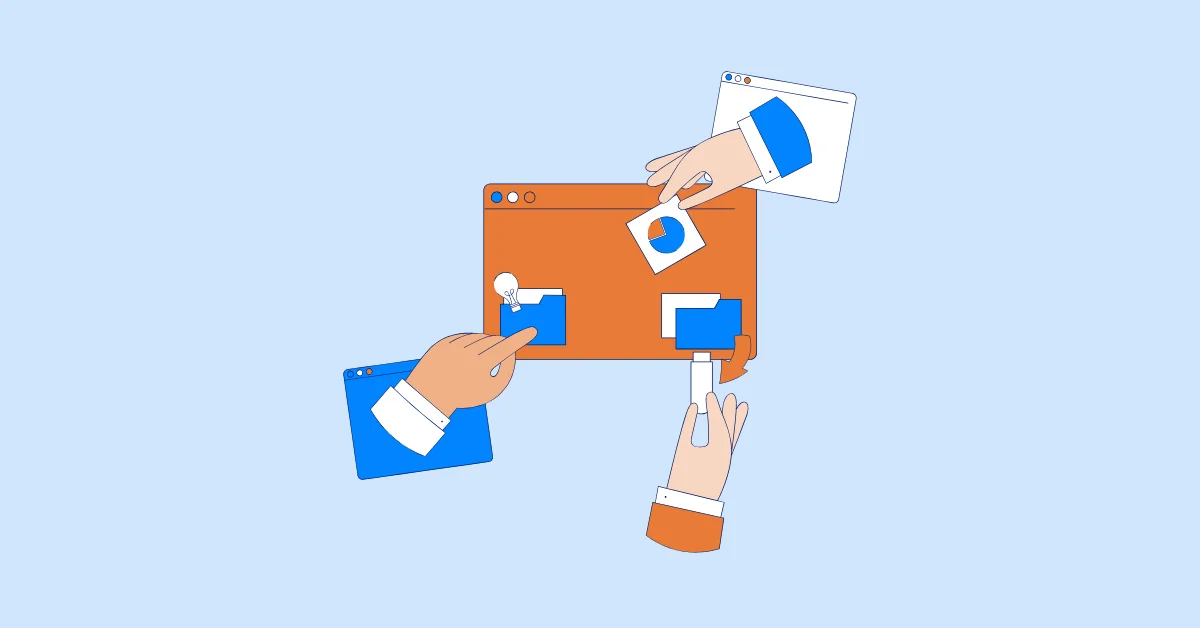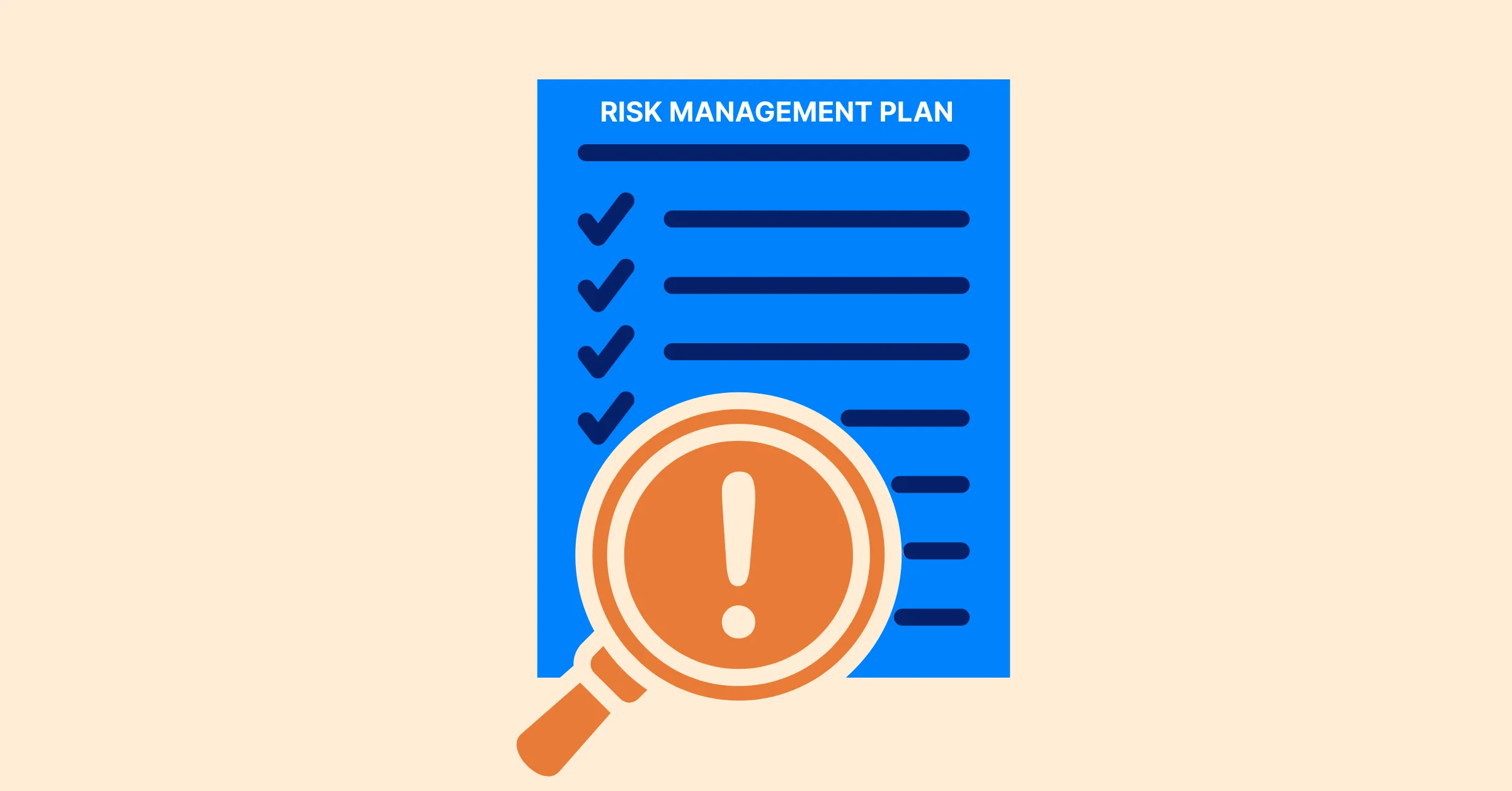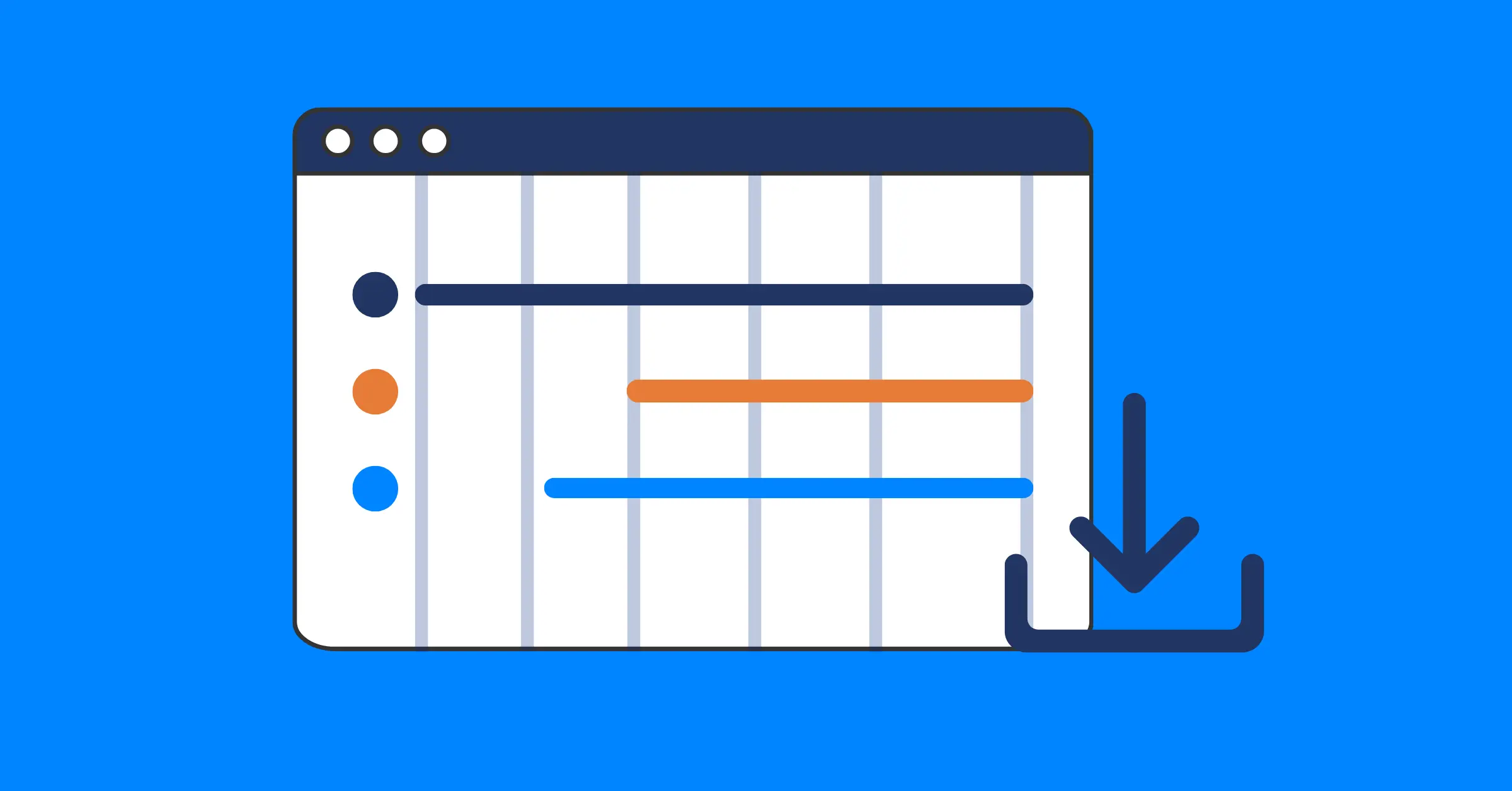Risk Management Plan Checklist: Everything You Need to Cover
Learn how to create a risk management plan checklist to identify, assess, and control project risks. Improve decisions and protect your business.
Managing risks effectively is essential for any organization that aims to achieve its objectives and maintain smooth operations. A Risk Management Plan provides a structured approach for identifying, assessing, and addressing potential risks before they impact projects or business activities. With a clear risk management plan in place, organizations can minimize disruptions, make informed decisions, and improve overall efficiency.
In this article, we’ll explore what a risk management plan is, its key components, and why it’s a critical tool for organizations across all industries.
What Is a Risk Management Plan?
A Risk Management Plan is a comprehensive document that outlines how an organization will identify, evaluate, and address project risks to minimize their potential impact on objectives and operations. It defines the approach, processes, and tools an organization uses to manage risks, ensuring that potential threats are mitigated and opportunities are maximized.
The core goal of a risk management plan is to reduce the likelihood of risks occurring and limit the damage if they do occur. This proactive approach helps organizations avoid surprises, streamline their response processes, and protect resources, time, and investments.
The Role of Risk Management in Project Success
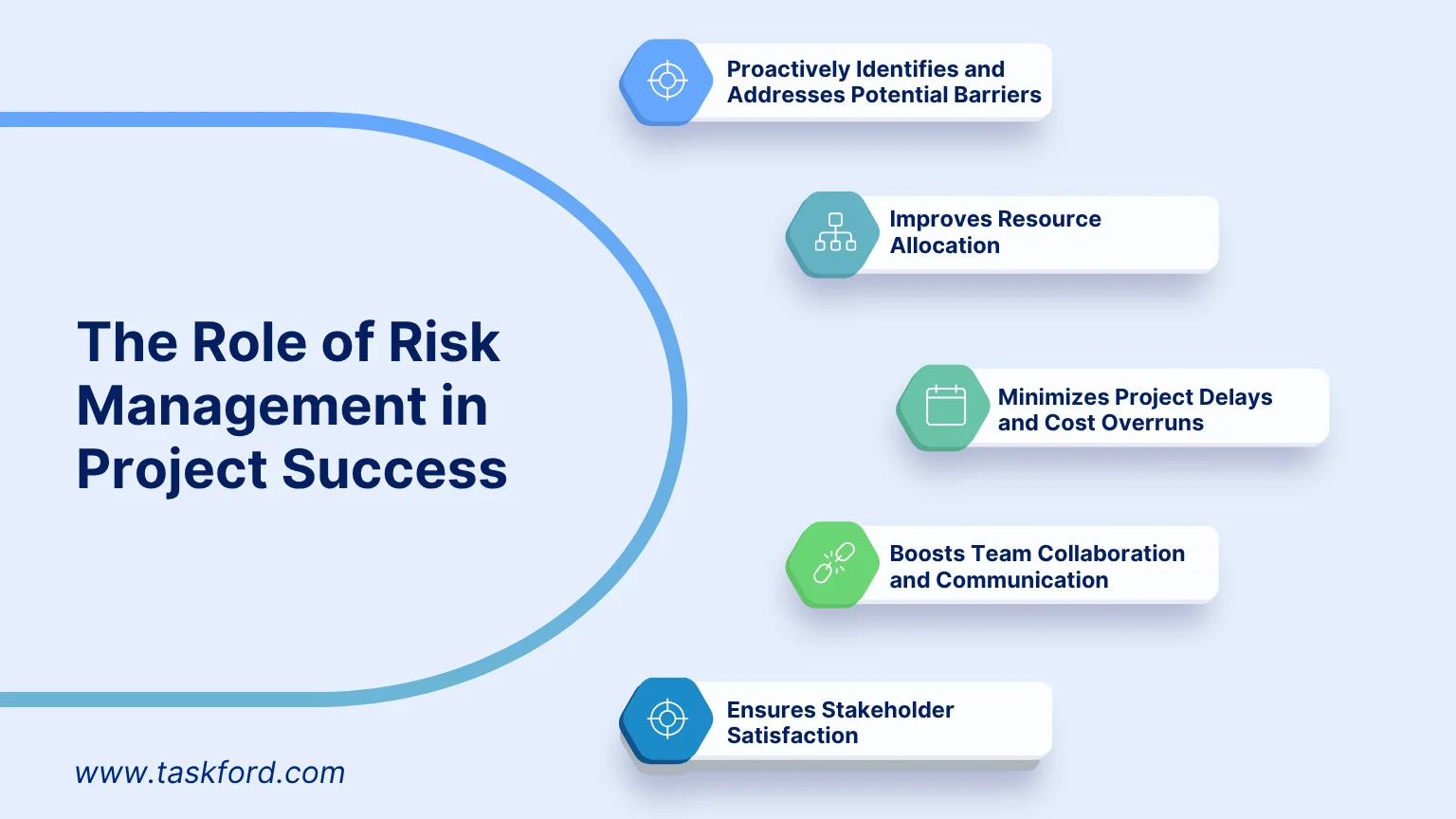
Risk management plays a pivotal role in ensuring the success of projects across industries. Whether you're launching a new product, overseeing a construction project, or managing a software development initiative, a detailed risk management plan will help you mitigate the potential downsides and seize opportunities effectively.
- Proactively Identifies and Addresses Potential Barriers: One of the core functions of risk management is to identify and assess risks before they impact the project timeline, budget, or quality. By understanding potential obstacles early, teams can prepare appropriate responses.
- Improves Resource Allocation: When risks are clearly identified, organizations can allocate resources more effectively. Instead of reacting to problems as they arise, you can proactively put measures in place to reduce risk exposure, leading to more efficient resource use.
- Minimizes Project Delays and Cost Overruns: Risk management helps avoid disruptions that might delay the project or inflate its budget. Whether it's scope creep, unforeseen technical challenges, or regulatory hurdles, having a risk management plan in place allows project managers to foresee potential roadblocks and avoid or resolve them quickly.
- Boosts Team Collaboration and Communication: A risk management plan involves a cross-functional approach to identifying and mitigating risks, which often fosters better communication between departments and team members. This improved collaboration can lead to better execution and smoother project management.
- Ensures Stakeholder Satisfaction: Managing risks effectively leads to smoother project delivery, which, in turn, helps meet stakeholder expectations. By addressing and mitigating potential risks, organizations are more likely to deliver successful outcomes, leading to satisfied clients and business partners.
What to Include in a Project Risk Management Plan
A well-structured Project Risk Management Plan provides a clear framework for identifying, analyzing, and controlling potential risks that may affect project outcomes. Including the right components ensures your team can respond quickly to challenges and maintain control over cost, schedule, and quality throughout the project planning process. Below are the essential elements that every project risk management plan should cover.
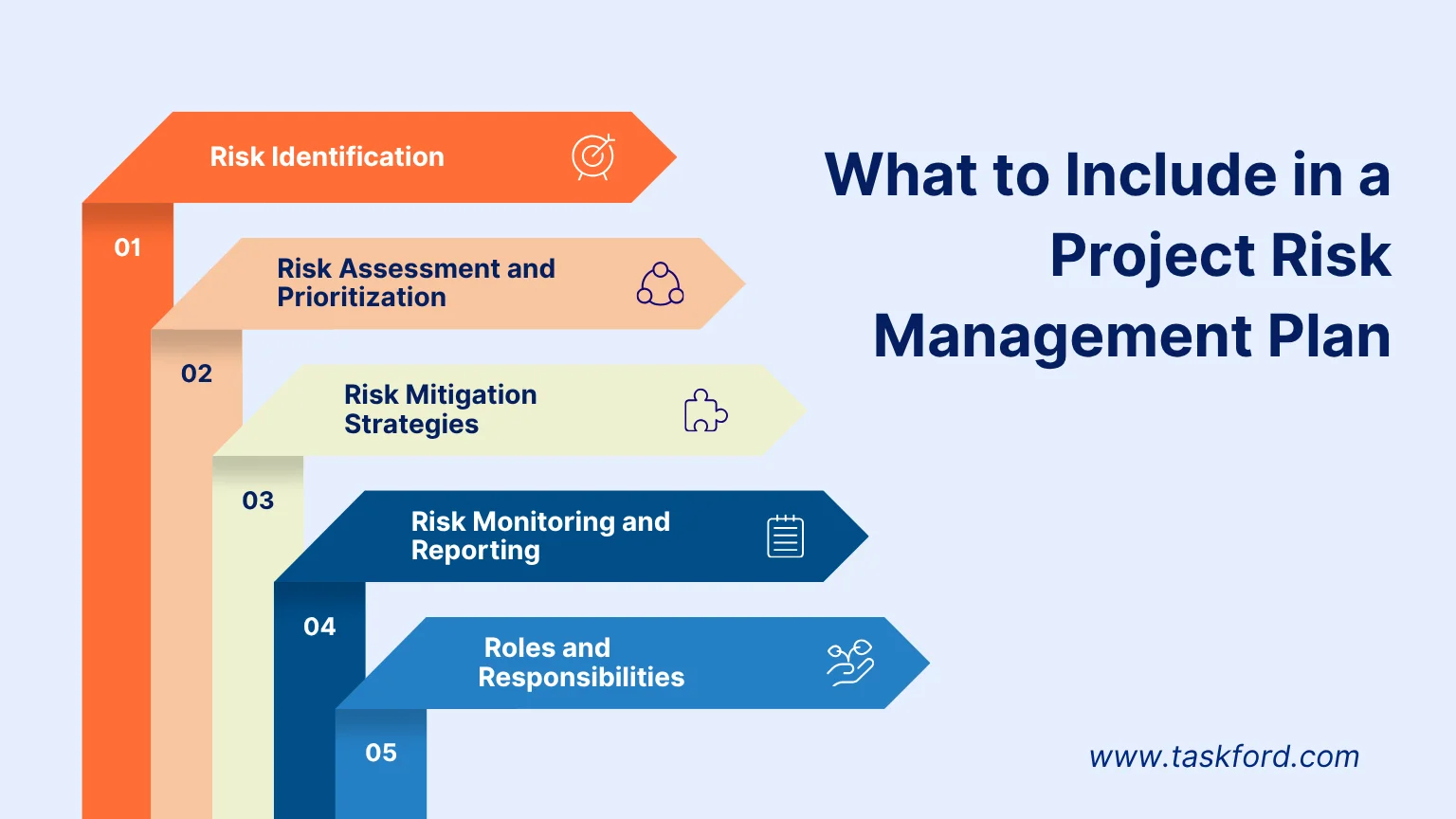
1. Risk Identification
The first step in managing project risks is identifying what could go wrong before it happens. Risk identification involves collecting insights from project stakeholders, reviewing past projects, and analyzing all aspects of the current project — from resources and timelines to external dependencies.
Common methods for identifying risks include:
- Brainstorming sessions with team members and stakeholders
- SWOT Analysis (Strengths, Weaknesses, Opportunities, Threats)
- Risk checklists or historical data from similar projects
- Expert judgment and lessons learned
Clearly document each identified risk in a risk register, describing its cause, potential impact, and area of influence. This creates a foundation for assessment and prioritization in the next stage.
2. Risk Assessment and Prioritization
Once risks are identified, the next step is to assess and prioritize them based on their probability and impact. Not all project risks carry the same weight—some may cause minor delays, while others could derail the entire project.
To effectively assess risks:
- Assign a likelihood score (e.g., low, medium, high)
- Evaluate the potential impact on project objectives such as scope, schedule, cost, and quality
- Use a risk assessment matrix to visualize which risks require immediate attention
Prioritization helps project teams focus on high-impact risks first, allowing for efficient allocation of time and resources to areas that matter most.
3. Risk Mitigation Strategies
After assessing the risks, it’s time to define risk mitigation strategies—actions that reduce the likelihood or impact of each identified threat. Developing proactive responses ensures that your project team is prepared when challenges arise.
Common risk mitigation approaches include:
- Avoidance: Changing project plans to eliminate the risk entirely.
- Reduction: Implementing measures to lower the probability or impact.
- Transfer: Shifting the risk to a third party (e.g., through insurance or outsourcing).
- Acceptance: Acknowledging the risk and preparing contingency plans if it occurs.
Each mitigation strategy should be documented in the project’s risk register, along with responsible team members and planned response actions.
4. Risk Monitoring and Reporting
Risk management doesn’t end once the plan is created — it requires continuous monitoring throughout the project lifecycle. Regular reviews help identify new project risks, track changes to existing ones, and ensure mitigation actions are effective.
A strong risk monitoring process includes:
- Periodic risk reviews and updates to the risk register
- Regular communication between project teams and stakeholders Tracking risk response effectiveness through performance metrics
Transparent risk reporting builds trust with stakeholders and ensures everyone stays informed about potential challenges and their status.
5. Roles and Responsibilities
A successful risk management plan depends on clearly defined roles and responsibilities. Everyone involved in the project should understand their part in identifying, reporting, and responding to risks.
Key roles typically include:
- Project Manager: Oversees the overall risk management process and ensures it aligns with project goals.
- Risk Owner: Monitors assigned risks, implements mitigation strategies, and reports on progress.
- Project Team Members: Identify risks in their work areas and communicate concerns promptly.
- Stakeholders and Sponsors: Review high-priority risks, provide input, and approve major mitigation plans.
Defining accountability ensures that project risks are managed proactively rather than reactively, supporting smoother execution and improved outcomes.
Checklist for Risk Management Plans
A risk management plan checklist helps you evaluate how well your organization or project is prepared to handle potential risks. By reviewing each category below—production, marketing, financial, legal, human resources, and general operations—you can identify weak spots, strengthen preventive strategies, and ensure that your project risks are managed effectively.
This checklist can be adapted for different industries, from agriculture and construction to corporate projects, ensuring that all areas of your business are covered.
To strengthen your understanding of strategic decision-making and organizational resilience, you can explore research from Harvard Business Review that discusses how leaders prepare for uncertainty and change.
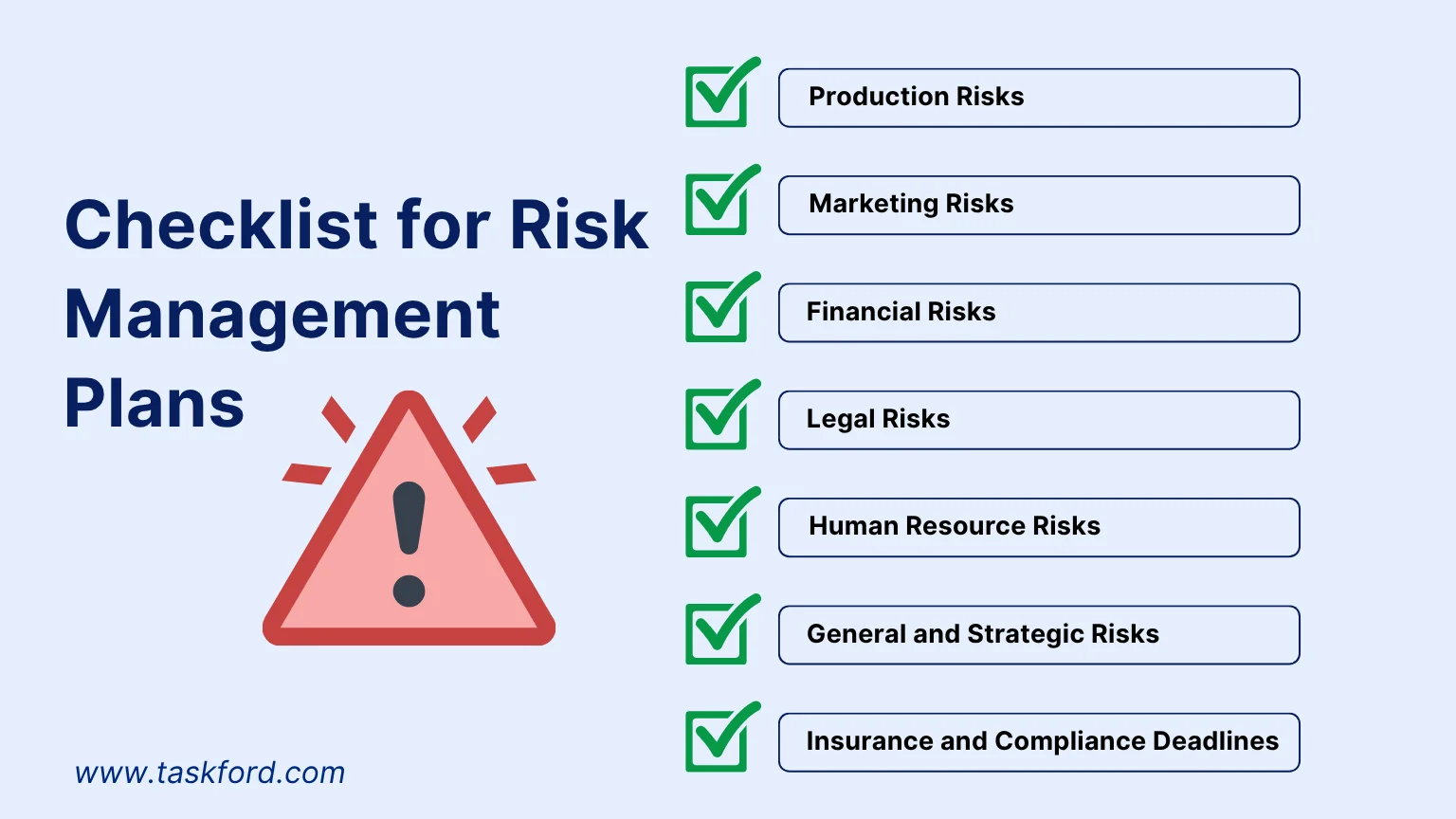
1. Production Risks
Production-related risks often affect output, supply, and operational stability. Reviewing these areas ensures you’re prepared for losses, resource shortages, or system failures.
Production Risk Checklist:
- Have you recently evaluated your risk in the event of loss of production assets such as crops, animals, or materials?
- Have you explored alternative production methods and assessed their potential impact?
- Do you have the technical knowledge to consider an additional or alternative enterprise?
- Is your insurance coverage sufficient to handle severe production losses?
- Have you reviewed all crop or production insurance options with your agent?
- Have you conducted a SWOT analysis (Strengths, Weaknesses, Opportunities, Threats) for your operation?
- Is your production site capable of supporting irrigation or resource diversification?
2. Marketing Risks
Marketing risks arise from price volatility, demand fluctuations, or weak sales strategies. A well-defined marketing plan aligns your financial and production goals with your overall project objectives.
Marketing Risk Checklist:
- Do you have a current, written marketing plan?
- Is your marketing plan aligned with your organization’s goals, financial plan, and production strategy?
- Are you confident in your understanding of market opportunities and trends?
- Have you reviewed your marketing options within the past six months?
- Do you understand how insurance revenue guarantees can enhance your marketing flexibility?
3. Financial Risks
Financial stability is the foundation of effective risk management planning. Assessing financial risks helps you prepare for both best- and worst-case scenarios while maintaining profitability.
Financial Risk Checklist:
- Do you have a current and realistic business plan?
- Have you developed plans for both best-case and worst-case scenarios?
- Do you know your cost of production and break-even points?
- Can you create and interpret financial statements such as balance sheets, cash flow, and income statements?
- Have you reviewed your financial ratios (including debt-to-asset ratio and net worth growth)?
- Have you evaluated whether your insurance coverage could:
- Repay operating loans?
- Support marketing opportunities during a loss?
- Have you reviewed your tax liabilities and developed appropriate strategies?
- Have you explored all financing options and government programs available to you?
- Are you comfortable with your current level of debt and long-term obligations?
- Do you regularly consult financial professionals—such as lenders, accountants, or consultants—when making major decisions?
4. Legal Risks
Legal risks can lead to significant financial loss or project disruption. Regularly reviewing your legal exposures ensures compliance and minimizes potential liabilities.
Legal Risk Checklist:
- Is your will, living will, or transfer plan current and legally sound?
- Have you reviewed your insurance policies to ensure adequate coverage for liabilities such as:
- Public access or direct marketing risks
- Environmental or pesticide issues
- Land use or zoning disputes
- Do you understand all provisions of your contracts, leases, and loans?
- Have you evaluated the most suitable business entity structure for your operation?
- Do you maintain a strong working relationship with your attorney and accountant?
- Are you in compliance with safety, labor, and environmental regulations?
5. Human Resource Risks
People are a vital part of your organization’s success. Managing human-related risks protects both your employees and your long-term goals.
Human Risk Checklist:
- Is your personal and employee insurance (medical, disability, life) up to date?
- Have you assessed your exposure to employee accidents or dishonesty?
- Do all employees receive comprehensive safety training?
- Do you maintain a clear and updated employee handbook?
- Are your organizational goals Specific, Measurable, Attainable, Reasonable, and Timed (SMART)?
- Have you effectively communicated your goals to all team members and stakeholders?
- Are roles assigned based on training, experience, and strengths?
6. General and Strategic Risks
These broader risks can affect your overall business strategy and sustainability. Regular evaluation ensures continuous improvement and preparedness.
General Risk Checklist:
- Do you have a strong relationship with your risk management advisors?
- Are you evaluating and adopting new technologies that improve efficiency?
- Are you planning and safeguarding savings for education and retirement?
- Do family members or business partners know the location of key documents?
- Do you regularly review opportunities to increase profitability or reduce costs?
7. Insurance and Compliance Deadlines
Keeping track of key insurance dates and compliance requirements is a critical part of project risk management. Missing these deadlines can lead to financial loss or uncovered risks.
Insurance and Compliance Checklist:
- Do you know all critical insurance sign-up and renewal dates?
- Have you reported your production history and acreage data accurately?
- Are payment deadlines and damage reporting procedures clearly documented?
- Have you reviewed all crop, revenue, and livestock insurance options with your provider?
Conclusion
A strong risk management plan is more than a compliance requirement; it’s a proactive strategy that helps organizations anticipate challenges, reduce uncertainty, and achieve project goals with confidence. By identifying, assessing, and monitoring potential project risks, teams can protect resources, maintain timelines, and improve decision-making across all levels of operation.
Using a structured risk management plan checklist ensures that every critical area, from production and finance to legal and human resources, is carefully reviewed and managed. The more prepared your organization is, the greater your resilience against disruptions and unexpected setbacks.
Whether you’re managing a single project or a complex operation, the key is consistency: regularly review your risk plan, update your mitigation strategies, and maintain open communication among all stakeholders.
Related Blog:
Making work simpler,
smarter, and more connected
Join our waitlist and be notified first.

Related Blog
Subscribe for Expert Tips
Unlock expert insights and stay ahead with TaskFord. Sign up now to receive valuable tips, strategies, and updates directly in your inbox.

